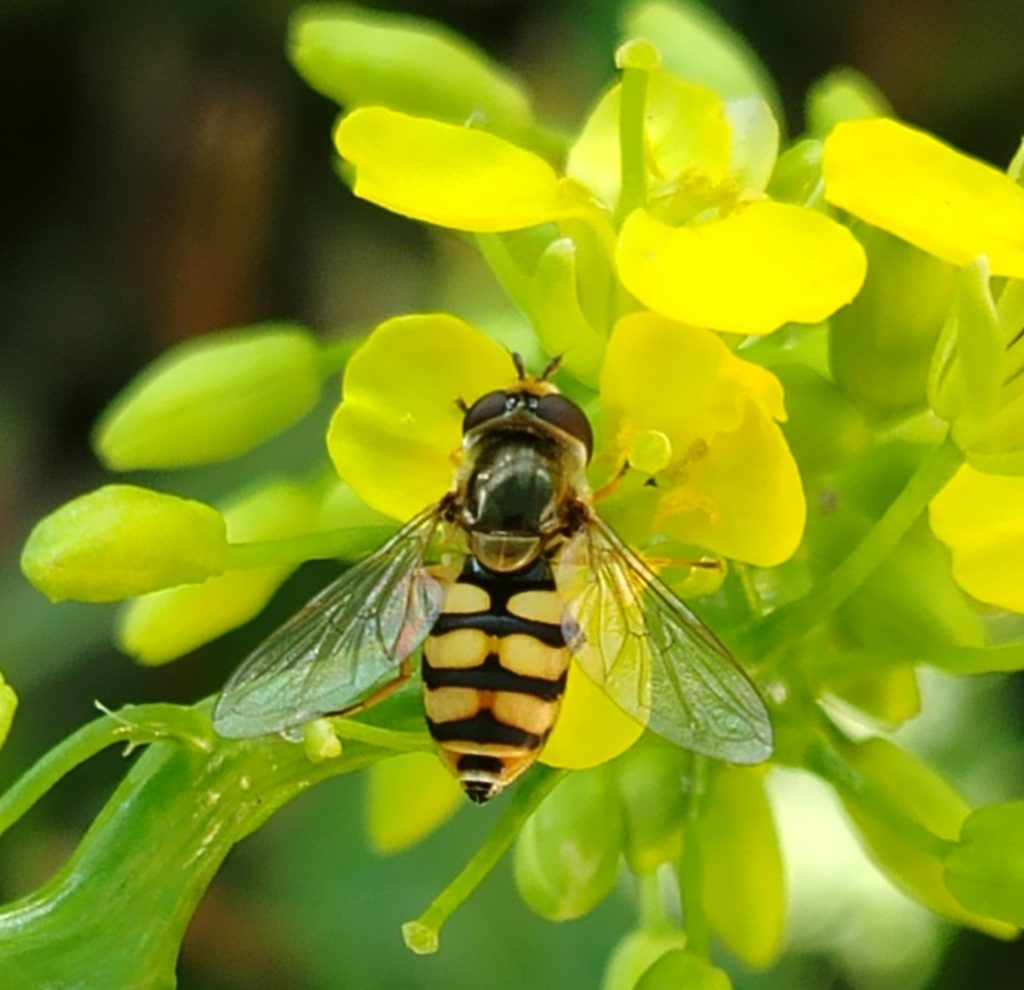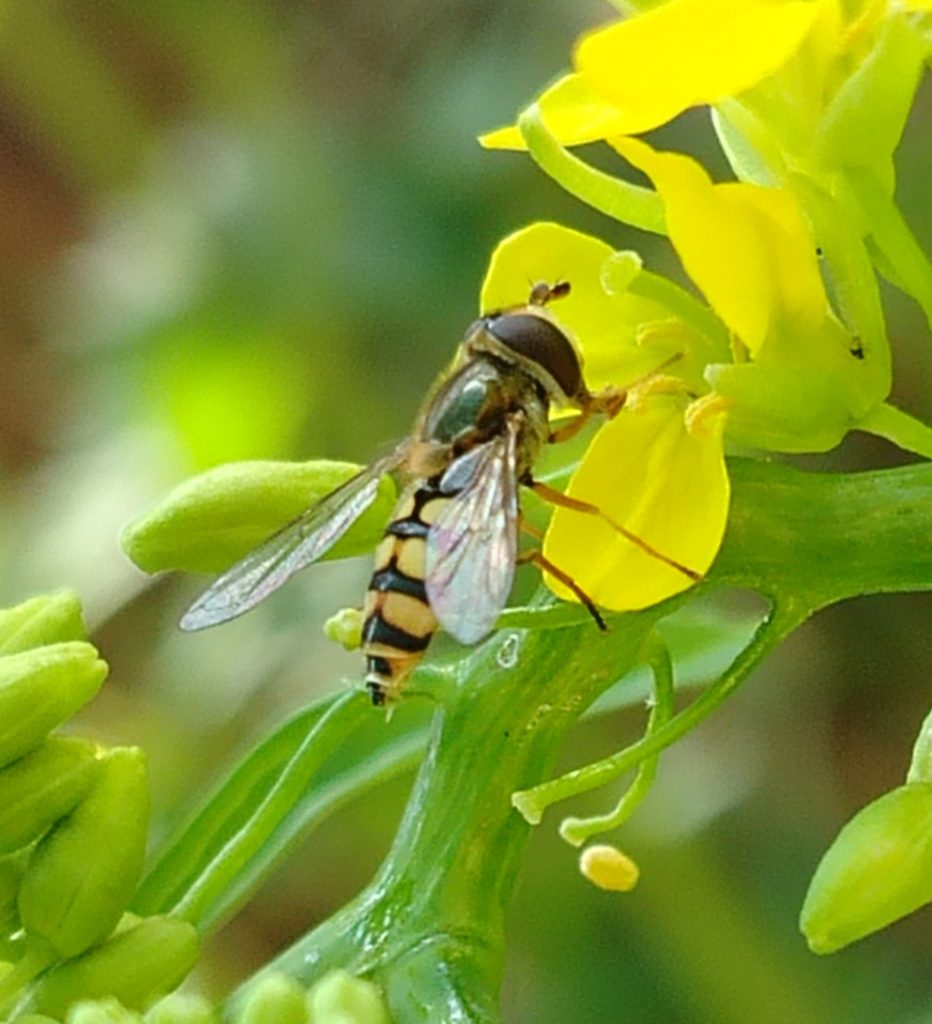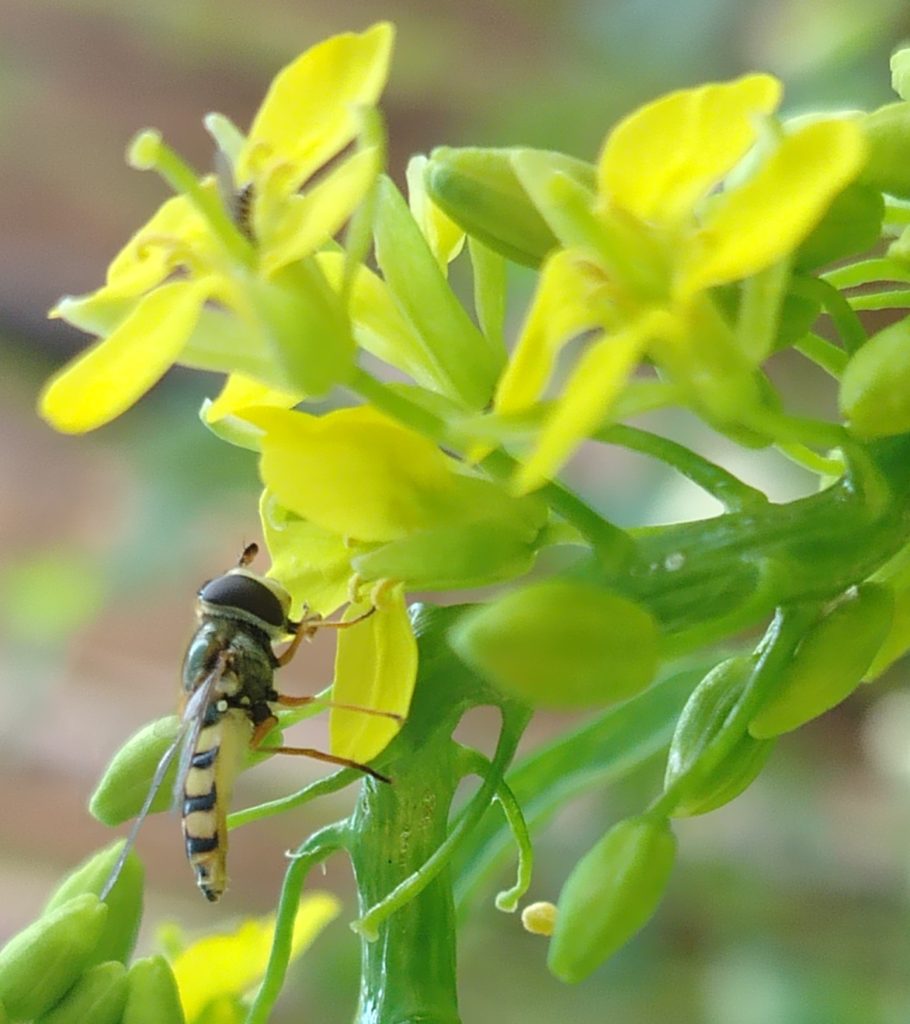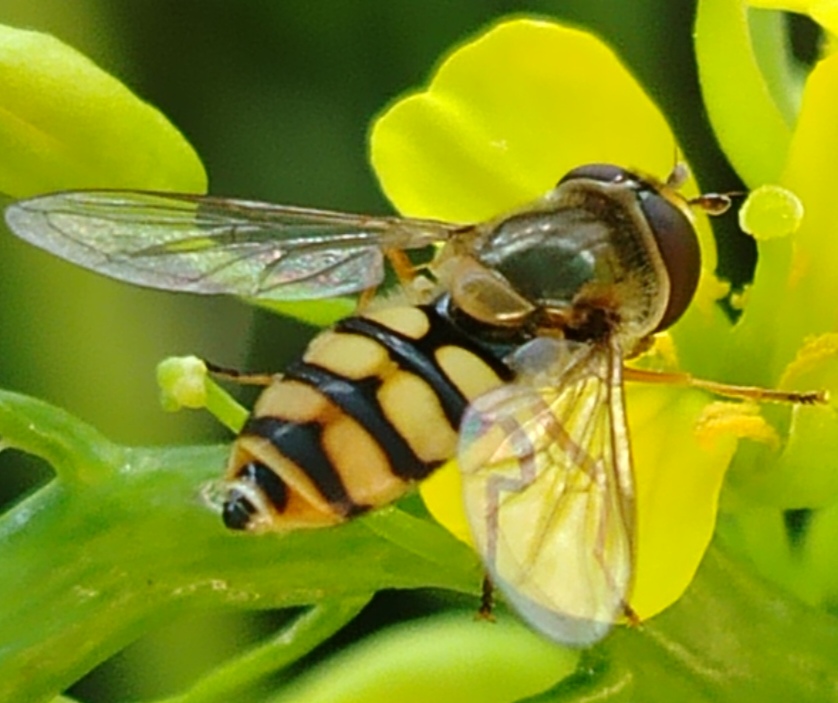Walking through the vegetable path the other day, I noticed a small but fascinating visitor darting around the mustard flowers. With its quick, delicate movements and ability to hover mid-air, it was unmistakably a hoverfly (family Syrphidae). These little beauties often get overlooked, yet they play a big role in the health of our gardens.

A Friendly Pollinator
At first glance, many people mistake hoverflies for bees or wasps because of their bright yellow and black markings. But don’t worry – they don’t sting or bite! These harmless insects are master pollinators, busily sipping nectar and transferring pollen as they hover from flower to flower. In fact, hoverflies are among the most important pollinators worldwide, right alongside bees.

The Magic They Bring to the Garden
Hoverflies do more than just pollinate:
- Pollination Power – They love open flowers like mustard, coriander, parsley, and other garden herbs, ensuring we get stronger harvests.
- Natural Pest Control – Many hoverfly larvae feed on common pests such as aphids, thrips, and mites. One larva can gobble up dozens of aphids in a single day!
- Biodiversity Boost – By encouraging hoverflies, we invite balance into the garden ecosystem, reducing the need for chemicals.

Did You Know?
- Hoverflies can fly backwards, sideways, and hover in one spot like a tiny helicopter.
- There are over 6,000 species of hoverflies around the world.
- They are sometimes called “flower flies” because of their love for blossoms.
- Hoverflies are excellent at mimicking bees and wasps – it’s their clever way of avoiding predators.

A Gentle Reminder from Nature
Seeing that hoverfly hover so gracefully over the mustard flowers reminded me of the quiet helpers we often overlook. They ask for nothing in return, yet they gift us with stronger plants, fewer pests, and healthier ecosystems.
So next time you’re in the garden and you spot a little “bee-like” insect hovering in mid-air – pause for a moment. You may just be watching one of nature’s most underrated heroes at work.

